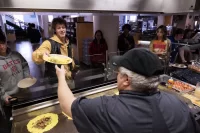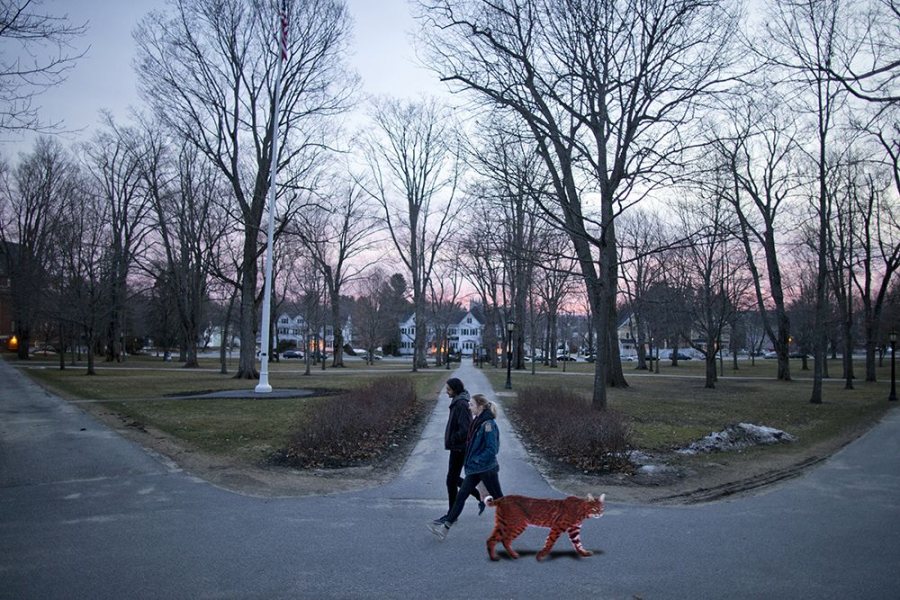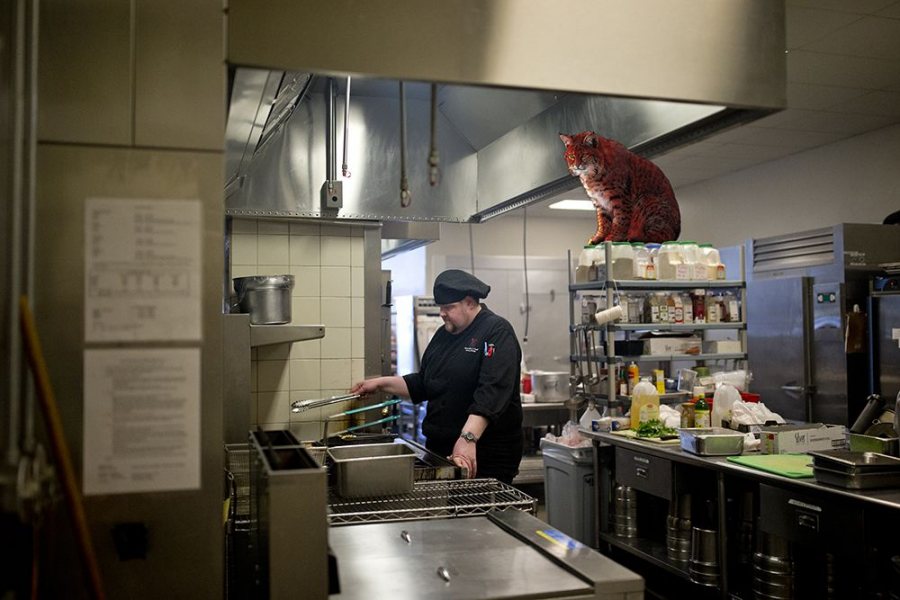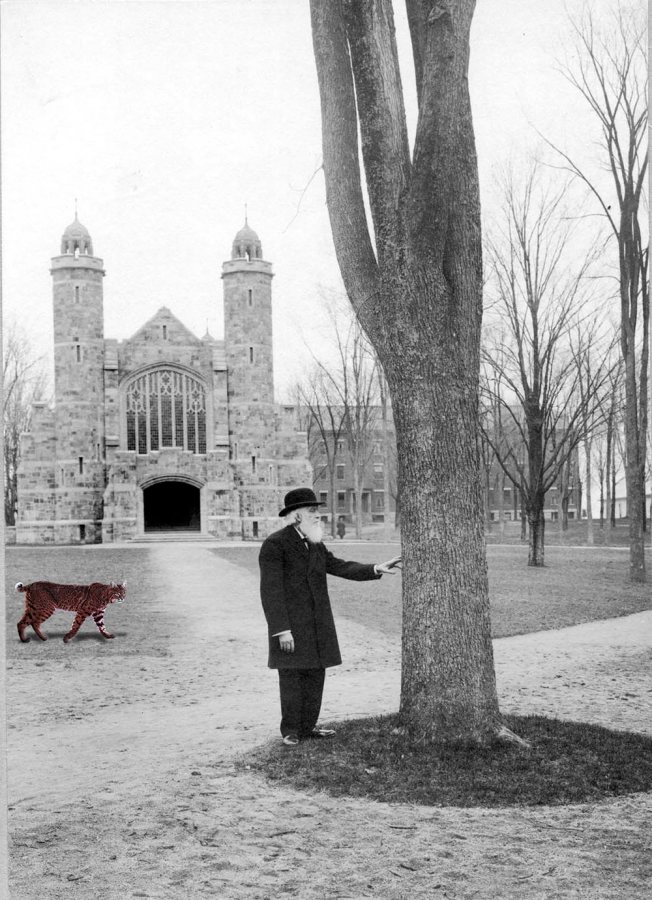
Garnet bobcat subspecies confirmed at Bates from sightings and science

Bates students, faculty, and staff have grown accustomed to seeing “Garney,” a rare but apparently amiable subspecies of bobcat, around campus.
The cat may be out of the bag at Bates.
Recent campus sightings, supported by insights from a Bates evolutionary biologist, confirm the discovery and identification of a new subspecies of Lynx rufus, the North American bobcat.
The new subspecies, tentatively given the name Lynx rufus batesiana, is distinguished by a garnet-colored coat and, in stark contrast to others of the species, a relatively friendly demeanor.
Students began reporting sightings in early March, and a recent account by Isabelle Marlow ‘19 and Katherina Tran ‘19 is typical.
“We were scared at first,” said Marlow, who, along with Tran, spotted the bobcat that students have nicknamed “Garney” while heading to their campus jobs on March 15.
https://youtu.be/vd6G1Nhp-Yo?t=3s
They had a right to be concerned: Bobcats in the wild and in Bates lore are notoriously fierce; the historic Bates fight song, “The Bobcat,” promises that “claws will fly and the Bears will die” when the bobcat comes around.
“He’s pretty cool.”
But Marlow and Tran stood their ground, and they’re glad they did. “He seemed pretty friendly, and approachable,” said Marlow. “He’s pretty cool,” Tran added.
While other bobcat subspecies eat small mammals like rodents, rabbits, and the occasional deer, Lynx rufus batesiana “mostly just begs for almond cookies outside Commons,” Tran said.
Don Dearborn, an evolutionary biologist at Bates, says that a new bobcat subspecies is entirely possible from a genetic perspective.
“A feline’s reddish color simply means that one type of melanin, the red-yellow phaeomelanin, has completely replaced the black or brown type, eumelanin,” he explains.
The coloring could be due to a genetic mutation. On the other hand, “he might just be using Clairol for Cats.”
This coloring, he says, “could have happened through a simple genetic mutation on the X chromosome.”
On the other hand, Dearborn theorizes, “he might just be using Clairol for Cats.”
This is not the first time a garnet bobcat has been spotted around campus.
Sightings go back as long ago as 1894, when legendary Bates professor Johnny Stanton spotted such a creature during one of his bird walks.
As Stanton wrote in his diary: “Saw a garnet bobcat to-day. Caused a fright among us, so we retired to the new publik house, the Blue Goose, to calm our nerves with faculty beverages. Shall not tell Brother Cheney that our abstaining hath gone off the rails.”
Prompted by the campus sightings, Director of Photography and Video Phyllis Graber Jensen reviewed images from the last few years and was stunned to see something new.
“I had seen that garnet blob in my images, but I thought it was a ketchup smudge,” she said. “Or maybe marinara.”

Garney looks on as a member of Bates Dining Services prepares waffle fries (widely known to be among bobcats’ favorite dishes).
The discovery of a garnet bobcat gives Bates a leg up in the NESCAC, says Andy Walter, the college’s sports information director, who says that Garney will be a guest on a forthcoming Bates Bobcast.
For years, unconfirmed stories have circulated in the NESCAC regarding mascot-institution sustainability, Walter notes, whether it’s Middlebury trying to introduce panthers into Vermont or Hamilton trying to clone a soldier from the Continental Army.
“I’m just glad to know that Garney is one of us.”






